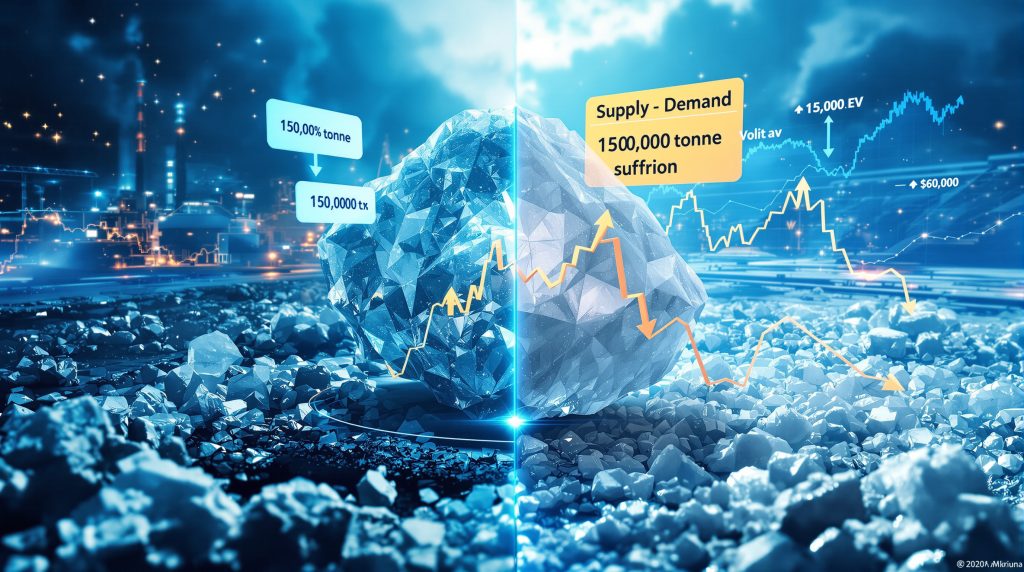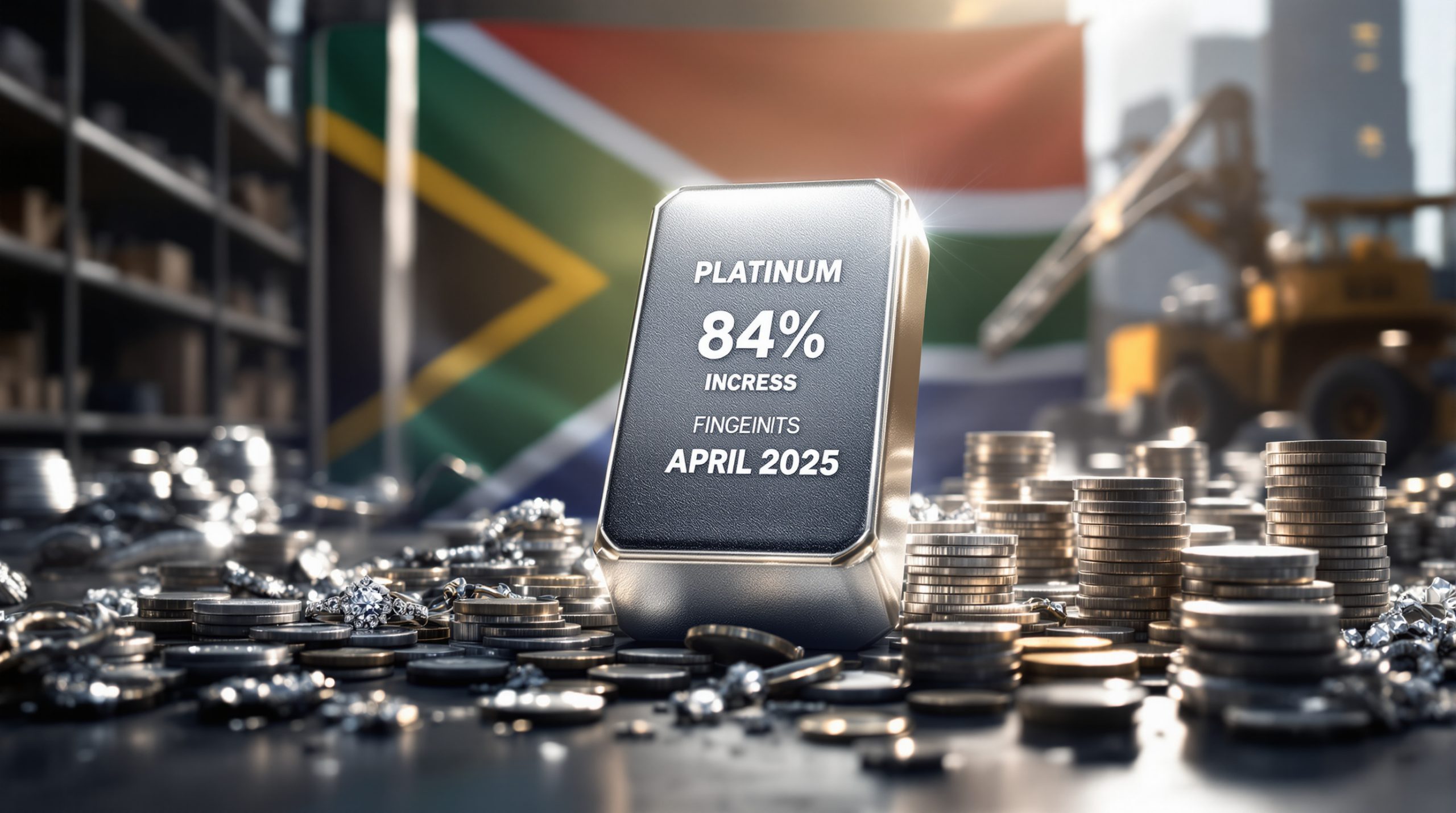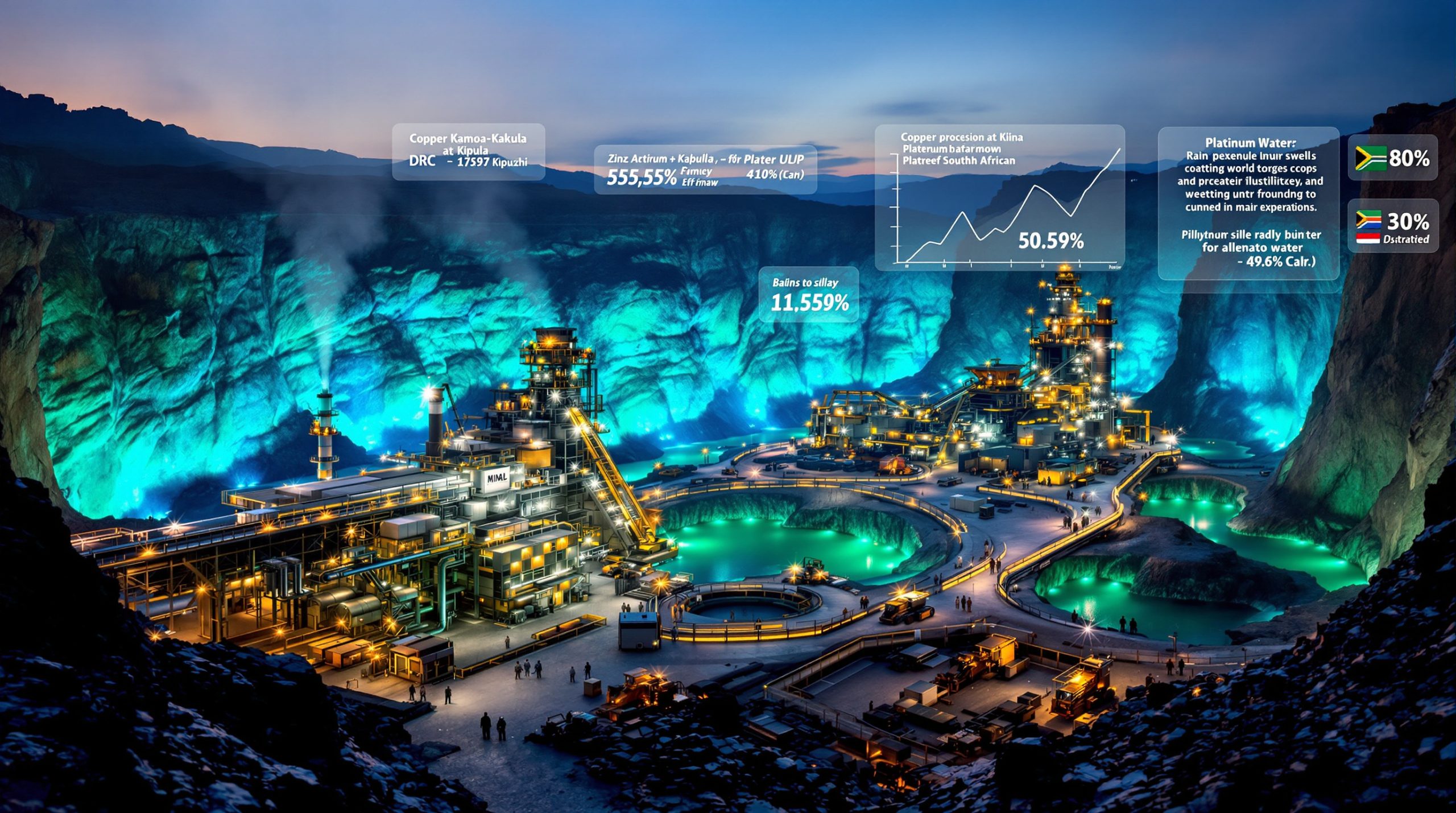What's Driving the Lithium Market Volatility in 2025?
The lithium market in 2025 continues to experience remarkable volatility, characterized by dramatic price swings and rapidly shifting market sentiment. Following the massive price collapse between 2022-2024, when lithium carbonate prices plummeted by over 90% from their peak, the market has shown tentative signs of stabilization with occasional price rallies interspersed with sharp corrections. This instability stems from the fundamental tension between accelerating demand from electric vehicle manufacturers and energy storage systems versus the substantial expansion in global production capacity.
The False Dawn of Mid-2025
Between June and October 2025, the lithium market experienced a notable price rally, with prices surging from US$575/t to US$985/t – representing a 71% increase that briefly rekindled optimism among investors and producers. However, this rally proved unsustainable as several key market factors reversed:
- The temporary suspension of operations at a major Chinese lithium mine due to expired permits initially triggered supply concerns
- The earlier-than-anticipated restart of this production facility quickly alleviated these constraints
- Regulatory approvals for a major Chinese producer prevented anticipated production disruptions
- Market sentiment rapidly shifted as supply fears dissipated, unwinding the speculative price premium
Current Price Trends and Market Sentiment
As of late 2025, lithium prices have retreated significantly from their mid-year highs but remain above early 2025 levels. This market behavior reflects:
- Persistent oversupply conditions despite robust demand growth
- Widespread investor skepticism regarding sustainable price recovery
- Continued short-selling pressure on major lithium stocks
- Market recalibration following the evaporation of supply disruption concerns
What's the Current Supply-Demand Balance in the Lithium Market?
The global lithium market in 2025 faces a fundamental imbalance that continues to pressure prices and company valuations. Understanding this dynamic requires examining both sides of the equation in detail.
Global Lithium Demand Growth Trajectory
Lithium demand maintains its robust growth trajectory in 2025, driven primarily by:
| Demand Factor | Contribution to Growth | Key Metrics |
|---|---|---|
| Electric Vehicle Production | 65% of total demand | Global EV sales approaching 20 million units in 2025 |
| Energy Storage Systems | 20% of total demand | 12% annual growth in lithium battery consumption |
| Consumer Electronics | 10% of total demand | Steady but slower growth than other sectors |
| Other Applications | 5% of total demand | Industrial uses and emerging technologies |
Total global lithium demand is projected to reach approximately 1.4 million metric tons of lithium carbonate equivalent (LCE) in 2025, representing significant growth compared to 2023 levels.
Persistent Oversupply Conditions
Despite strong demand growth, the lithium market in 2025 remains characterized by oversupply:
- Global production has increased from approximately 737,000 tonnes LCE in 2022 to nearly 1.2 million tonnes in 2024
- The market surplus is estimated at 150,000-175,000 tonnes of lithium in 2025
- New production capacity continues to come online across multiple regions
- Production costs have decreased, enabling operations to remain profitable at lower price points
According to historical data from the U.S. Geological Survey, this supply-demand imbalance has kept prices subdued despite the growing importance of lithium in the global lithium market investment.
How Are Lithium Mining Companies Adapting to Market Conditions?
Faced with challenging market conditions, lithium producers are implementing various strategies to weather the downturn and position themselves for future recovery.
Capital Raising and Financial Restructuring
Several major Australian lithium companies have successfully raised capital in 2025 to strengthen their financial positions:
- Liontown Resources secured over $300 million through equity raising
- Core Lithium raised $50 million to support operational restructuring
- WA1 Resources obtained $100 million to advance development projects
These capital raises demonstrate continued investor belief in the long-term lithium story despite near-term challenges, particularly with the introduction of Australia lithium tax breaks that have improved the financial outlook for domestic producers.
Operational Optimization and Cost Reduction
Companies are focusing intensely on operational efficiency and cost reduction:
- Implementation of more efficient extraction and processing technologies
- Development of restart plans with lower cost structures than previous iterations
- Temporary production curtailments at higher-cost operations
- Workforce reductions and organizational restructuring
- Deferral of capital expenditures for expansion projects
These measures aim to ensure operational sustainability during the period of lower prices while maintaining the ability to ramp up production when market conditions improve.
What Geopolitical Factors Are Influencing the Lithium Market?
The lithium market in 2025 is increasingly shaped by geopolitical considerations as governments recognize the strategic importance of battery materials in the energy transition.
Government Strategic Investments
Governments are taking direct action to secure lithium supply chains:
- The U.S. government has taken a significant equity stake in a major lithium project in Nevada
- This investment highlights the strategic importance of securing domestic lithium supply for national security
- The project represents one of the largest lithium deposits in the United States
- Similar strategic investments are occurring globally as nations seek to secure battery material supply chains
Research from the International Energy Agency indicates that governments worldwide are increasingly treating battery minerals as strategic assets, similar to how oil has been viewed for decades.
China's Dominant Market Position
China continues to exert significant influence over the global lithium market:
- Chinese companies control substantial portions of global lithium processing capacity
- Decisions by major Chinese producers have outsized impacts on market sentiment
- China's domestic EV market growth directly affects global lithium demand
- Trade tensions and potential tariff policies add uncertainty to market dynamics
According to lithium price forecasts, these geopolitical factors add layers of complexity to market forecasting beyond pure supply-demand fundamentals.
When Will the Lithium Market Recover?
The question of market recovery timing remains central for investors and industry participants alike, with various perspectives emerging from industry analysts.
Short-Term Outlook (2025-2026)
The immediate outlook suggests continued challenges:
- Oversupply conditions are expected to persist through at least early 2026
- Price volatility will likely continue as the market responds to production disruptions and demand signals
- Investor sentiment remains cautious following the false dawn of mid-2025
- Further industry consolidation is probable as weaker players struggle to maintain operations
Medium-Term Projections (2026-2030)
Looking beyond the immediate horizon, several factors point to potential market improvement:
- Supply growth is expected to slow as marginal projects are delayed or canceled
- Demand growth remains robust, potentially leading to market balance by 2027-2028
- The supply surplus is forecast to peak around 2027 before transitioning toward deficit
- Industry consolidation should lead to more disciplined capacity additions
Research on mining investment cycles indicates that commodity producers typically require sustained price signals (6-12 months above incentive prices) before committing to new capacity, creating natural supply-demand rebalancing mechanisms.
Long-Term Structural Demand Growth
The fundamental case for lithium remains strong over the long term:
- Global EV adoption continues to accelerate, with many countries setting aggressive fossil fuel vehicle phase-out targets
- Energy storage deployments are growing exponentially as renewable energy penetration increases
- Battery technology evolution may increase lithium intensity per kWh
- Recycling will become increasingly important but won't offset primary production needs before 2030
These factors suggest that patient investors may eventually be rewarded, though the timing remains uncertain.
What Are the Key Investment Considerations for Lithium Stocks?
For investors considering exposure to the lithium sector in 2025, several factors merit careful consideration before making investment decisions.
Company-Specific Factors
Not all lithium companies are created equal in this challenging market:
- Cost position on the global cost curve is increasingly critical for survival
- Balance sheet strength determines ability to weather continued market weakness
- Project quality (grade, recovery rates, impurities) directly impacts profitability
- Downstream integration can provide margin protection during price volatility
- Management experience navigating commodity cycles offers competitive advantage
According to industry analysis, lithium operations in the top quartile of the cost curve (lowest cost producers) typically maintain positive margins even during downturns, while operations in the third and fourth quartiles face significant financial stress.
Market Sentiment and Trading Patterns
The lithium sector has exhibited distinct trading patterns that investors should understand:
- Significant short interest in major producers has created volatile price movements
- Sharp reactions to supply disruption news followed by corrections once issues resolve
- Correlation with broader EV and clean energy sentiment creates sector-wide momentum
- Potential for rapid price movements on changing market narratives
These patterns create both risks and opportunities for investors with different time horizons and risk tolerances.
How Is the Competitive Landscape Evolving?
The lithium industry structure continues to evolve in response to market conditions and geopolitical pressures.
Industry Consolidation Trends
Market pressures are driving consolidation:
- Stronger players are acquiring distressed assets at attractive valuations
- Joint ventures are forming to share development costs and risks
- Vertical integration is increasing as battery manufacturers and automakers secure supply
- Chinese companies continue expanding their global footprint through strategic investments
Emerging Production Regions
The geographic distribution of lithium production is diversifying:
- African countries like Zimbabwe and Namibia are increasing their market share
- Latin American brine operations in Argentina and Chile continue expanding with new Argentina lithium brine insights revealing untapped potential
- North American projects are advancing with government support
- European domestic production initiatives are progressing, albeit slowly
Zimbabwe's lithium production increased significantly from approximately 1,200 tonnes in 2021 to approximately 35,000-40,000 tonnes in 2023, according to Zimbabwe Geological Survey reports.
This geographic diversification has implications for both supply security and geopolitical considerations in the global energy transition, with significant advancements in lithium brine mining operations contributing to supply growth.
Frequently Asked Questions About the Lithium Market in 2025
Will Lithium Prices Return to Their 2022 Highs?
Most industry analysts do not expect lithium prices to return to their 2022 peak levels in the foreseeable future. Those prices represented an exceptional period of supply tightness and speculative activity. However, prices are expected to eventually recover from current levels as the market moves toward balance, though the timing remains uncertain.
How Are Battery Chemistry Changes Affecting Lithium Demand?
The evolution of battery chemistries is having mixed effects on lithium demand:
- Shift toward higher nickel cathodes can reduce lithium content per kWh
- LFP (lithium iron phosphate) batteries are gaining market share, especially in entry-level EVs and energy storage
- Solid-state battery development continues but commercial deployment at scale remains years away
- Overall, chemistry changes are not expected to significantly reduce lithium intensity in the near term
According to research published in the Journal of Energy Storage, lithium consumption per kWh varies by chemistry: NCM batteries use 0.8-1.0 kg LCE/kWh, NCA batteries use 0.9-1.1 kg LCE/kWh, and LFP batteries use 1.1-1.3 kg LCE/kWh.
What Role Will Recycling Play in the Lithium Market?
Lithium recycling is receiving increased attention but faces several challenges:
- The first wave of EV batteries is only beginning to reach end-of-life
- Collection and processing infrastructure is still developing
- Economic viability depends on lithium prices and recovery efficiency
- Regulatory frameworks are evolving to encourage higher recycling rates
By 2025, recycling contributes only a small percentage to overall lithium supply, though this is expected to grow significantly in the 2030s as the first generation of mass-market EVs reaches end-of-life.
Conclusion: Navigating the Lithium Market's Uncertain Future
The lithium market in 2025 presents a complex picture of short-term challenges amid long-term structural growth. The temporary price rally in mid-2025 demonstrated both the market's sensitivity to supply disruptions and investors' eagerness for signs of recovery. However, the subsequent correction reinforced that sustainable price improvement requires a more fundamental rebalancing of supply and demand.
For investors, the key question remains whether to focus on the persistent near-term oversupply or the compelling long-term demand growth driven by electrification and energy storage. Companies with strong balance sheets, low-cost operations, and quality assets are best positioned to weather the current downturn and capitalize on eventual market recovery.
While 2025 may not have delivered the sustained recovery that many hoped for, the fundamental drivers of lithium demand remain intact. The transition to electric mobility and renewable energy continues to accelerate globally, suggesting that patient investors may ultimately be rewarded as the market works through its current imbalance.
Understanding lithium market dynamics requires analyzing both technical factors like project development timelines (which typically range from 5-10 years depending on deposit type) and market sentiment factors that can drive short-term price movements independent of fundamentals. India's recent development of its first battery-grade lithium refinery further illustrates the global race to secure processing capacity in this critical mineral market.
Looking for Early Insights Into the Next Major Mining Discovery?
Discovery Alert's proprietary Discovery IQ model delivers real-time notifications when significant mineral discoveries are announced on the ASX, giving traders and investors immediate actionable insights before the broader market reacts. Visit our discoveries page to explore how historic mineral discoveries have generated substantial returns and start your 30-day free trial today.




